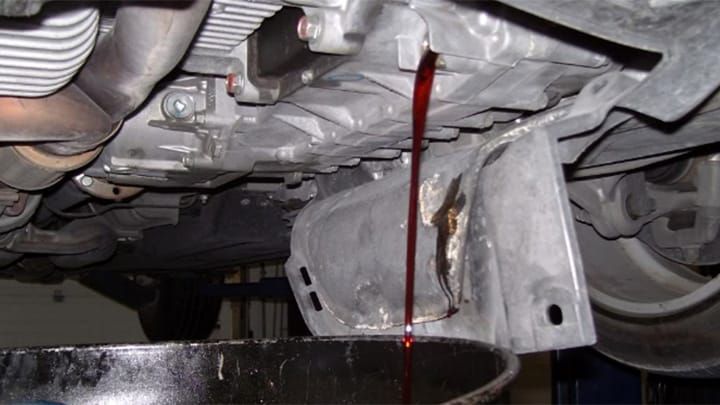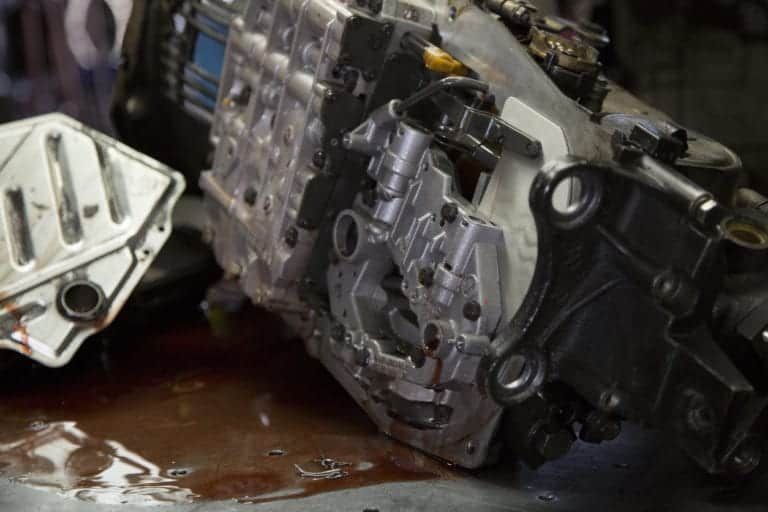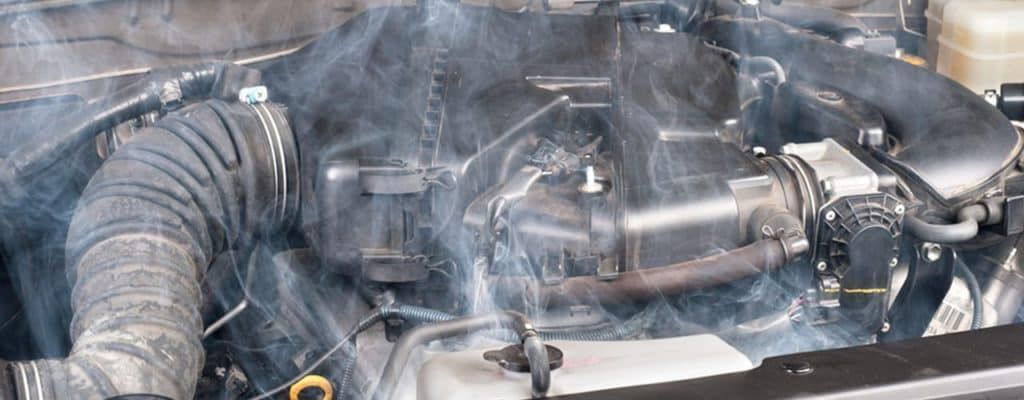Transmission Fluid Change Cost Guide for Vehicle Owners
If you’re a beginner driver, it’s good to be familiar with transmission fluid change costs. Everyone knows and focuses on changing engine oil, but only a few remember to change transmission fluid regularly.
Changing the transmission fluid is essential to extend your transmission’s life. Not opting for the service will result in an old fluid that loses its cooling and lubricating properties.
Moreover, you can find more than one way to change the fluid; traditional transmission fluid change or transmission flush. As a car owner, it’s crucial to know which option will work for your vehicle and how much it costs.
If you’re curious about cost and other necessary aspects of transmission fluid, continue reading the blog.
What is a Transmission Fluid?
It’s similar to engine oil and provides lubrication for the transmission. However, it also works as a hydraulic fluid too.
The fluid also helps keep the transmission at the correct operating temperature, lubricates moving parts, and facilitates gear shifts.
If you don’t know, transmission fluids also contain the following:
- Anti-wear additives
- Anti-form additives
- Anti-oxidation compounds
- Cold flow improvers
- Corrosion inhibitors
- Detergents
- Dispersants
- Gasket conditioners
- High-temperature thickeners
- Lubricants
- Petroleum dye
- Surfactants
- Seal swell additives
- Viscosity improvers/modifiers
Transmission Fluid Purpose
In automatic transmissions, fluid is essential; without sufficient levels, your transmission may not function as it should.
Apart from being used as a medium to supply hydraulic pressure from one end to another, its purpose is to control unit controls and fluid flow utilizing the valve body and transmission solenoids.
As mentioned, transmission fluid is responsible for pressure, friction, or even high heat. And when the wear and tear add up, this fluid becomes thin and dirty, losing its potential to control or remove heat from the transmission.
If you don’t focus on changing the fluid, your transmission will wear out sooner than it should due to the high operating temperature.
Moreover, it changes the way solenoids activate, and the flow of the fluid in the valve body shifts to put pressure on the different clutch packs.
Due to this, different gear sets get engaged to shift additional gears. Since transmission fluid facilitates a gearbox’s operation, its condition needs to be optimal to carry out all functions with ease.
What is a Transmission Fluid Change?
It’s a process of removing buildup within your system. The process doesn’t replace the old fluid with new; still, many manufacturers recommend the service.
If we talk about an automatic transmission, it uses a unique blend of hydraulic fluid. This fluid supplies power from the engine to the wheels. And this liquid is also essential for various processes, such as:
- Controlling heat generated by moving components inside the gearbox
- Controlling gear changes
- Shifting power from the engine to the transmission inside the torque converter
How Much Does a Transmission Fluid Change Cost

To determine the cost of changing the transmission fluid, you need to know where you will get it done; at a mechanic service facility or a dealer.
The next factor that influences the cost is the make and model of your vehicle. This part will also help identify the transmission fluid type you need and its quantity.
Automatic Transmission Fluid Change Cost
The average cost for a job like this at an independent shop will range between $150 to $250. Remember, this cost covers the fluid change itself. If you ask about the labor costs, it will run between $80 to $110.
If you need to know the cost per quart, transmission fluids cost ranges from $8-$20, most vehicles require around 5 to 15 quarts, costing $40 to $300.
Remember, when you go for transmission fluid change, you should also get a new filter, sometimes the pan gasket too.
And If you’re wondering, filters range between $15 to $30, and pan gaskets will cost you around $75 to $150. The total cost will be between $130 to $480, with an average price ranging from $80 to $250.
Moreover, if you get the service from a mechanic’s shop, you can expect an affordable service. However, be ready to get a hefty bill if you want to get it done at a dealer.
You can also ask for quotes from different repair facilities. Simply search for transmission fluid change cost near me, choose other options, and contact them for cost details.
Manual Transmission Fluid Change Cost
For manual transmissions , the fluid change cost is around $100. Since there’s no filter in this transmission type, there’s no need to worry about purchasing a replacement filter or gasket.
This factor divides the cost at around $30 to &70, keeping the labor costs around $60 to $100. But know that you need to perform manual transmission fluid change more often as there’s no filter.
Because a filter’s job is to prevent tiny metal particles and debris from getting into the fluid, increasing the chances of making the fluid dirty, that’s why it’s best to refer to your owner’s manual and know how often you should change the fluid.
If none of it appeals to you, you can always opt for the D-I-Y approach, which costs something between $50 to $100, which is affordable compared to the above-mentioned filter and fluid change cost.
Factors that Affect Transmission Fluid Change Cost
Finding a service to have the transmission fluid changed is easier. From oil change facilities to mechanic shops, the options are open.
More importantly, the amount you spend to change your transmission’s fluid is worthwhile. As a result, you save your transmission for good.
However, you may come across different pricing of fluid changes. But don’t worry as it may be due to the procedure they use.
They suck the fluid out of the transmission at some facilities using a machine, then refill it. Another way to do it is by dropping the transmission pan.
This process will become hassle-free if your vehicle comes with a screw-in drain plug. In some cars, a drain plug and screw-in external transmission filter are placed that helps finish a job without consuming too much time.
However, if these features aren’t present in the car, the fluid change process will get messier. Remember, when changing the fluid, the filter needs to be changed or cleaned as well.
If you have the right tools, you can perform fluid changing at home, or it will become a challenge otherwise.
Steps to Change Transmission Fluid at Home
If transmission fluid change costs confuse you, try changing transmission fluid yourself, following the simple steps.
Step:1
Start the transmission fluid changing process by sliding a jack from the front of your car and place it under the frame. To ensure that it is secure, put a jack stand in place.
Step:2
Find the bottom of your transmission; you should find the drain bolt. You need to loosen it using a hex head. It’s safe to wear rubber gloves at this point because once you lose the drain bolt, it will start pouring out.
You need to complete step#2 by removing the bolt using your hands.
Step:3
If your car has a filter, consider replacing it with a new one. Moreover, you will also notice multiple bolts in the surrounding pan. To take the filter out, you need to release them. Once done, put the pan back in place.
Step:4
At this point, you need to use your hex head to tighten the drain bolt so that it stays in place. At this point, you need to identify how much fluid you need to add.
Do it by taking out the drain pan. Expect it to be full of dirty transmission fluid. Pour the fluid into empty quarts’ bottles.
Lastly, locate the transmission fluid cap and fill the new and fresh fluid in.
How Often You Should Go for Fluid Change
The question can easily confuse anyone. However, to steer clear of confusion, you can refer to your owner’s manual to know how often you should change the transmission’s fluid.
For Manual Transmission
For manual transmission, most experts or manufacturers recommend transmission fluid change every 30,000 to 60,000 miles. You can change the fluid after 15,000 miles if you use your vehicle for heavy-duty tasks.
For Automatic Transmission
Automatic transmission fluid change varies from 30,000 miles to so on. Generally, the service interval ranges between 60,000 to 100,000 miles. However, if you decide to change it sooner than this, go for it. It won’t damage your car.
4 Ways to Extend the Life of Transmission Fluid
No doubt, changing transmission fluid is essential at some point. If you think transmission fluid change cost is a lot, you opt for the following steps to keep it in good condition and extend its life.
1) Try Using Synthetic Transmission Fluid
Popular these days, synthetic fluids work better than ordinary ones. They ensure better car performance. Synthetic fluids resist cold, oxidation and heat.
If it sounds like a better option to you, you can ask your go-to mechanic and see if it’s suitable for your vehicle.
2) Check and Maintain Car’s Cooling System
There’s no denying that heat is terrible for transmission. That’s why it’s a necessity to maintain your car’s cooling system. If you can, do it once after every two years.
You can check the coolant levels yourself or have an expert check them. It includes replacing your coolant/antifreeze, inspect your car for leaks and possible damages.
3) Keep an eye out for Transmission Fluid
Indeed, transmission fluid is a necessity for your car. That’s why it’s essential to build a maintenance routine to extend your transmission’s life.
Checking transmission fluid levels is a good option; therefore, make it a part of your routine, especially if you drive an old car. Since heat is damaging for your transmission, ensure to protect your vehicle from overheating.
4) Opt for Transmission Service
It’s recommended to have your car serviced after 30,000 miles if you own an older car or drive in the city. Know that it’s preventive maintenance to avoid extra repair costs in the future.
Conclusion
On average, transmission fluid change costs range from $80 to $250 if you change a filter and pan gaskets. As a car owner, you can consult with different automatic transmission services or refer to your car’s manual to learn how often you should opt for transmission fluid change.
If you create a regular maintenance schedule, you can increase the life span of your transmission. You can also lower the risks of significant transmission problems so you can continue to drive your car with ease.
You can trust Eagle Transmission & Automotive to service your transmission properly. The automotive service department at our shop has over 30 years of experience working on many different makes and models of vehicles. Get in touch with us today to learn more about our quality repair and maintenance services!
Frequently Asked Questions (FAQs)
- How much does it cost to change the transmission fluid?
Transmission fluid change cost depends on where you’re taking the service. The price ranges from $80 to $250. If you’ve got the right tools, expertise, and a will to do it yourself, it might cost you around $50 to $100.
- Is it worth replacing transmission fluid?
Changing fluid affects your car’s performance in a good way. But according to some manufacturers, there’s no need to change transmission fluid until your vehicle reaches the 75,000 to 100,000-mile mark. In a new automatic transmission, it starts at around $3,500. When you perform regular fluid maintenance, you can increase the transmission life, making the most of the cost.
- What happens if you don’t change transmission fluid?
If not changed frequently, the fluid gets dirty and won’t serve as an effective lubricant. Moreover, it won’t control the heat well. The liquid in poor condition will cause wear and tear on the clutches and other transmission components.
- Are transmission flushes necessary?
Many manufacturers recommend flushing your transmission every 30,000 miles, or in other words, after two years. The reason transmission flush is recommended is because it extends the transmission life. Like other preventative maintenance, the cost and time of the changing process can save you from costly repairs in the future.
- Is it okay to change transmission fluid after 100k miles?
Yes, it is absolutely fine. You should change the transmission fluid after 100k miles. The service intervals can be over 100,000 miles for new vehicles.
The post Transmission Fluid Change Cost Guide for Vehicle Owners appeared first on Eagle Transmission.





